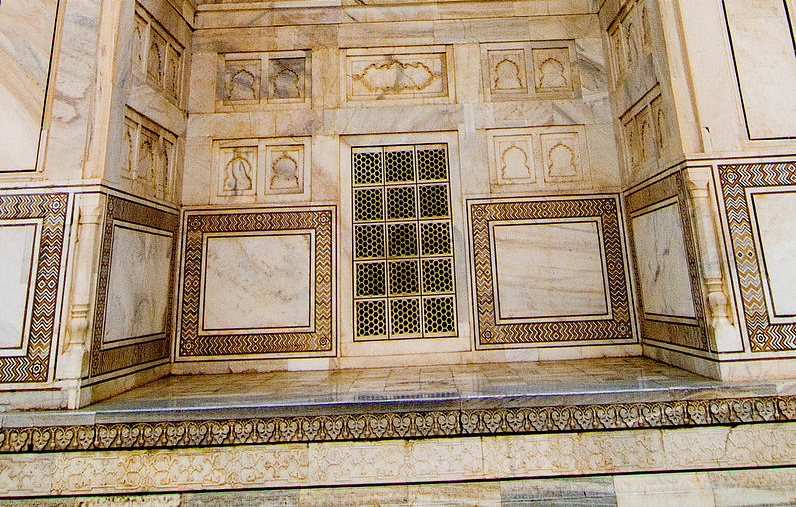Throughout history, humans have created doors specifically designed to keep people out – and often for terrifying reasons. From radiation-proof bunker gates protecting deadly secrets to temple doors with warnings written in dead languages, these barriers stand as silent guardians of mysteries that challenge our understanding of history and science. Our journey through the top 10 most mysterious doors takes us across continents and centuries, revealing the stories, legends, and sometimes horrifying truths behind these forbidden entrances.
10. The Sealed Door of Machu Picchu

In 2010, a French engineer named David CR stumbled upon a strange door at Machu Picchu, hidden away from the usual tourist paths. Believing it to be an entrance sealed by the Incas, he alerted archaeologists, who confirmed its existence. They discovered two additional entrances behind the door, leading to a vast chamber that might contain treasures or artifacts from pre-Hispanic times. Despite the excitement, authorities have yet to grant permission to open the door, fearing potential damage to the archaeological site. The door remains a tantalizing mystery, hinting at the Incan civilization’s secrets.
9. The Great Pyramid’s Hidden Tunnels

In Giza, Egypt, explorers uncovered two secret doors within the Great Pyramid, leading to tunnels that remain closed. These tunnels, found in the Queen’s Chamber, have sparked theories about undiscovered chambers and treasures hidden within the pyramid. A robot equipped with a camera revealed another sealed door behind the stone blocks, showcasing the incredible engineering of ancient Egypt. Despite the excitement, archaeologists face challenges in accessing these doors without damaging the structure, leaving many questions unanswered about what lies beyond.
8. The Taj Mahal’s Forbidden Doors

The Taj Mahal, a symbol of love, is also home to numerous sealed doors that experts believe could unleash carbon monoxide if opened. This gas, when combined with the marble, could lead to cracks in the monument. Legends suggest that opening these doors might awaken a dreadful curse from the underground chambers.
7. The Mysterious Door of the Padmanabhaswamy Temple

In 2011, the Indian Supreme Court ordered the opening of the long-sealed doors of Padmanabhaswamy Temple, revealing vaults filled with treasures worth over $22 billion. Among the findings were golden idols, ceremonial costumes, and diamonds the size of eggs. However, one door, known as Chamber B, remains sealed, with experts unable to open it despite extensive efforts. Some believe it holds unnamable horrors, while others speculate it may lead to hidden tunnels.
6. Room 873 at Fairmont Banff Springs Hotel

In Canada, Room 873 at the Fairmont Banff Springs Hotel is shrouded in mystery and ghostly tales. After a crime was committed in this room decades ago, it was sealed off, and guests reported strange occurrences, such as flickering TVs and eerie noises. The door to Room 873 is said to be bricked up, leaving curious guests to wonder about the haunting stories that linger in the hallways.
5. The Great Wall of China’s Secret Doors

The Great Wall of China, a monumental feat of engineering, also hides over 220 secret doors. These doors, discovered through aerial photography, were designed for trade, communication, and defense. They blend seamlessly into the wall, making them nearly invisible to the untrained eye. The existence of these doors reveals the wall’s dual purpose, serving not only as a barrier against invaders but also as a means of facilitating commerce and communication.
4. The Hidden Room in Mount Rushmore

Mount Rushmore, famous for its presidential carvings, conceals a secret room behind Abraham Lincoln’s head. Originally intended to hold historical records, the room was never completed. Today, it remains inaccessible to the public, preserving the architect’s vision of safeguarding the nation’s history.
3. The Secret Apartment in the Eiffel Tower

The Eiffel Tower, a symbol of Paris, has a hidden apartment at its top, once occupied by its architect, Gustave Eiffel. This secret space, now a museum, offers a glimpse into the past, showcasing the life of Eiffel and his contemporaries.
2. The Tennis Court at Grand Central Station

Amidst the hustle and bustle of Grand Central Station in New York, a hidden tennis court belongs to a private club. From the outside, it’s difficult to place where the tennis court is, given the exterior of Grand Central Station is elaborate and has no real hints as to where a large flat court could be seated that isn’t already being taken up by floor space for the terminal. For those in the know, the tennis court is a secret hideaway tucked within the architectural beauty of one of the city’s most iconic landmarks.
1. The Smallest Police Station in the World

In London, a seemingly ordinary lamppost hides the smallest police station in the world. Built in the 1930s, this tiny station was used as a watch post for officers monitoring Trafalgar Square. Its inconspicuous design reminds us that even the most mundane objects can hold surprising histories.




























